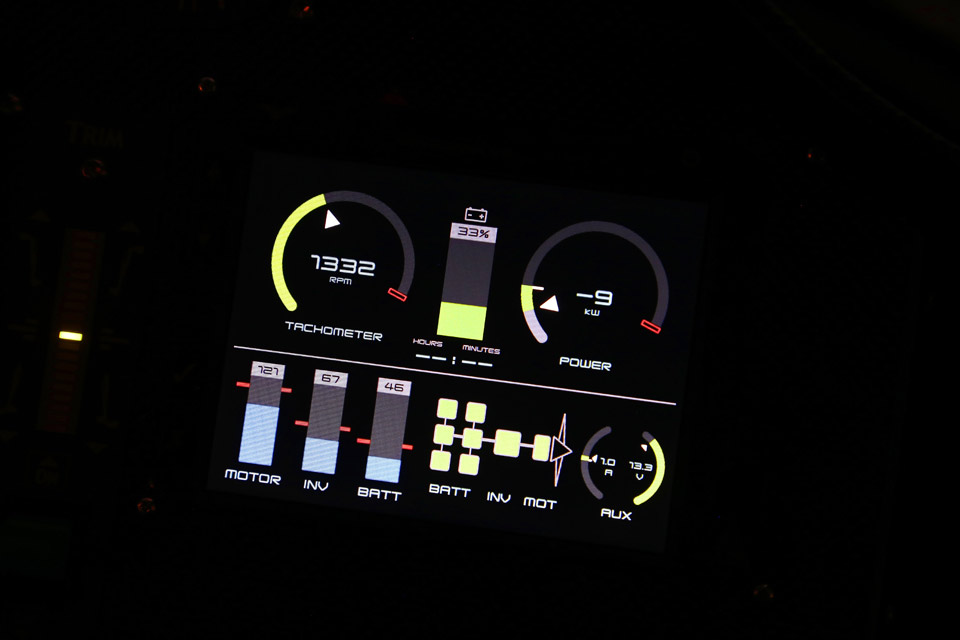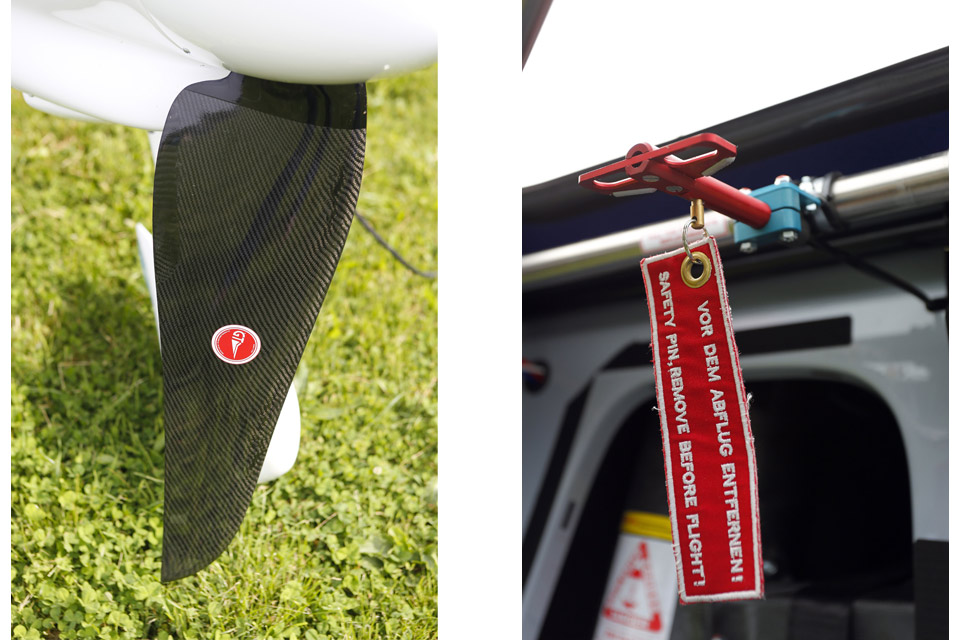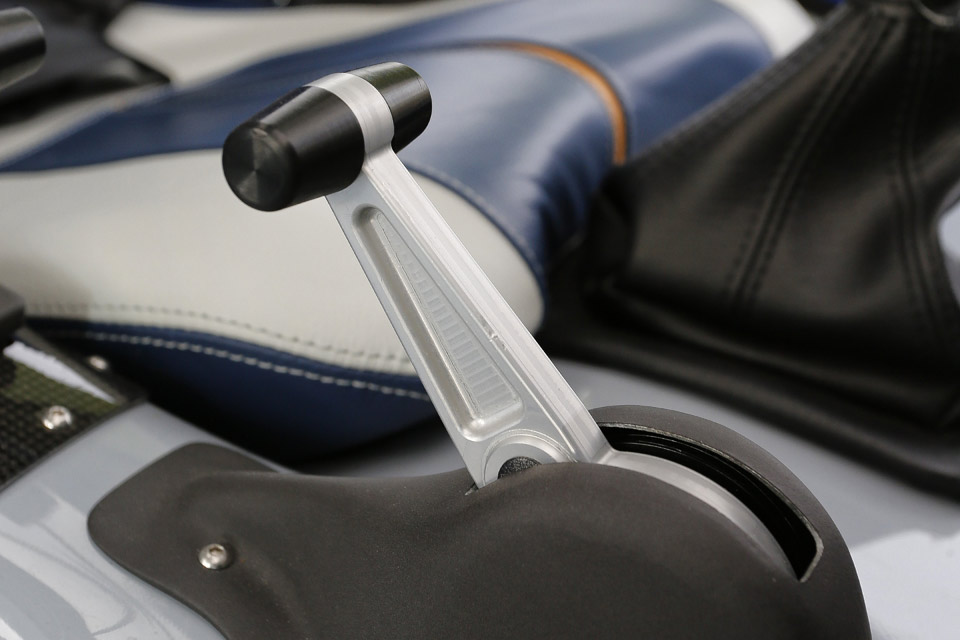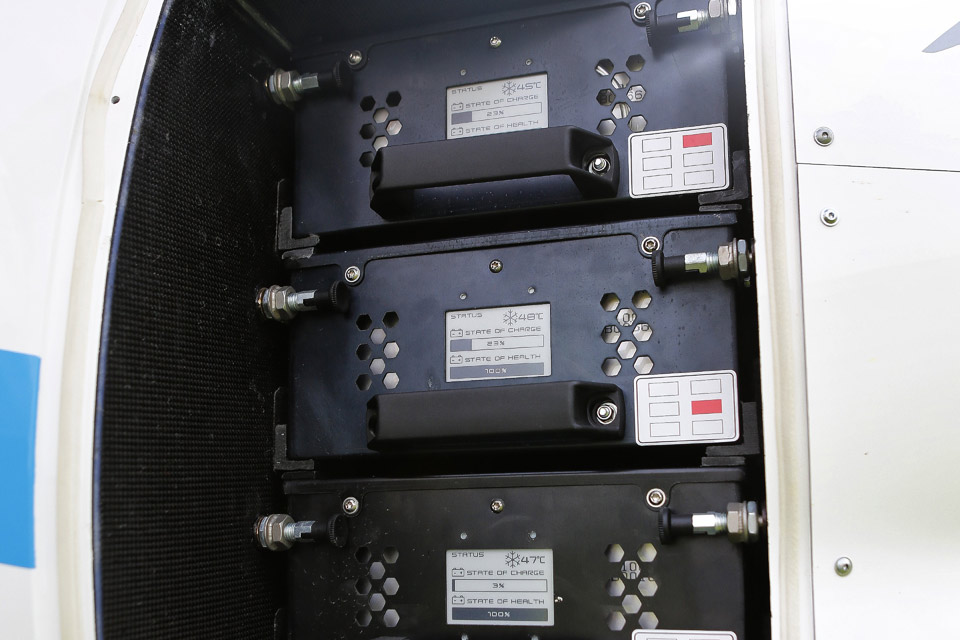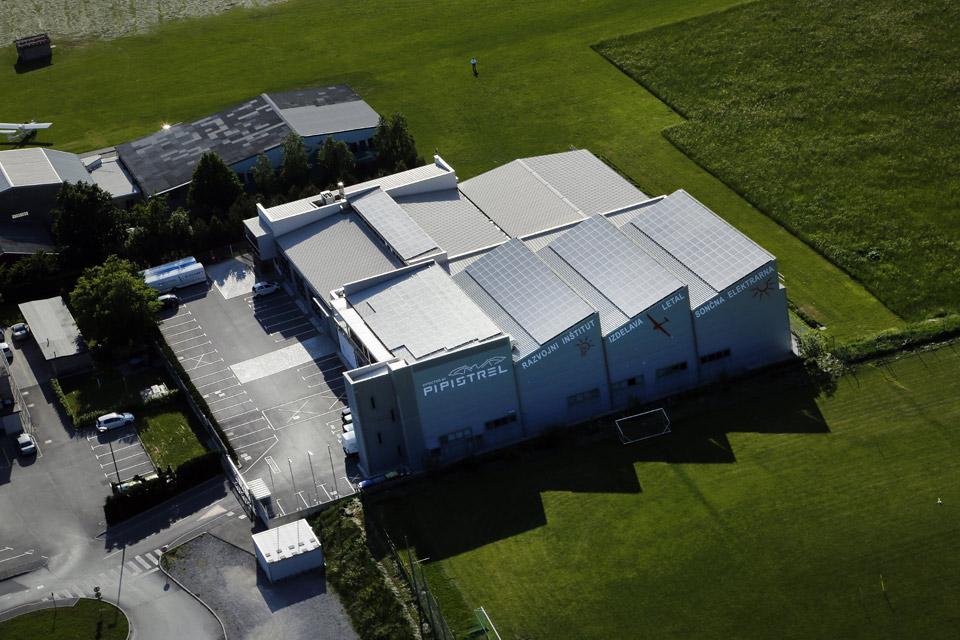Pipistrel Alpha Electro: The trainer of the future?
Amping up the light single
 There are those who look upon emerging electrically powered airplanes as little more than amusing oddities, just a notch above toy status. But European manufacturer Pipistrel, headed up by founder and President Ivo Boscarol and located in Adjovscina, Slovenia, is undaunted. While many American pilots may not be aware of this company, it has been turning out sleek, composite-construction single- and two-seat lightplanes and motorgliders since the 1990s. Most recently, it has turned its attention to electrically powered airplanes.
There are those who look upon emerging electrically powered airplanes as little more than amusing oddities, just a notch above toy status. But European manufacturer Pipistrel, headed up by founder and President Ivo Boscarol and located in Adjovscina, Slovenia, is undaunted. While many American pilots may not be aware of this company, it has been turning out sleek, composite-construction single- and two-seat lightplanes and motorgliders since the 1990s. Most recently, it has turned its attention to electrically powered airplanes.
This initiative first put Pipistrel on the map in 2011, when it won the NASA and CAFÉ Foundation’s Green Flight Challenge with its Taurus G4. The challenge: Fly 200 nm in less than two hours while averaging at least 200 seat-miles per gallon. The G4—a huge, purpose-built, twin-fuselage four-seater with a 75-foot wingspan, 3,300-pound max takeoff weight, 1,100-pound battery weight, and 200-horsepower electric motor—took home the $1.3 million prize. It was the third time that Pipistrel won the Green Flight Challenge.
The company then turned its design and engineering staff toward the two-seat trainer market. And last year Pipistrel unveiled the result at a fly-in in France—its latest electrically powered airplane, dubbed the WattsUp. Recently, Pipistrel ditched the WattsUp name (which I thought was catchy, by the way) and now calls the airplane the Alpha Electro. Presumably, the new name is intended to brand the airplane with Pipistrel’s piston-powered two-seat trainer, the Alpha Trainer, which meets LSA certification standards and is powered by an 80-horsepower Rotax 912 engine.
The Alpha Electro shares a lot with the Alpha Trainer. It has the same composite-construction airframe, cockpit, 1,212-pound maximum takeoff weight, and power-to-weight ratio. It has an 80-horsepower powerplant as well—but it’s a liquid-cooled, 60-kilowatt electric motor developed by electronics giant Siemens. The motor is powered by six air-cooled lithium ion batteries arranged in two packs—one pack installed just forward of the firewall, the other behind the pilot’s seat. Each battery weighs 45 pounds, for a total battery weight of 270 pounds. The batteries are made by South Korea’s Kokam Company LLC.
This airplane’s job is all about flying airport traffic patterns. Its battery endurance is approximately one hour, so a pilot wanting to fly locally and practice takeoffs and landings has plenty of time. “It will outlast the student pilot’s endurance,” says Pipistrel Chief Engineer Tine Tomazic, who says that the propeller is designed to regenerate electrical power when it’s windmilling, or at lower power settings. In a sense, the propeller can act as a sort of wind turbine, capable of partially recharging the batteries in flight. “For six trips around the pattern, you get an extra circuit for free,” Tomazic says of the propeller’s charging capability.
So is the Alpha Electro the trainer of the future? While it burns no fuel, emits no pollutants, makes very little noise, and boasts low operating costs, does it perform like a “real” airplane—or is it compromised by its uniqueness? We went to the Pipistrel factory to fly a conforming prototype.
Located in Slovenia’s Vipava Valley, at the western edge of the village of Adjovscina, the 85-employee factory is jam-packed with new Pipistrel airplanes—the Rotax-powered Sinus and Virus two-seaters, the Taurus motorgliders (one version Rotax-powered, one electrically powered), and the Alpha Trainer—in various stages of assembly. Outside, there are two grass runways, a flying club, and the conforming prototype of the Alpha Electro awaits.
Electro-flying
Nejc Faganelj, a Pipistrel test pilot, is my mentor, and together we perform a walkaround. There’s not much to check. The main item is to check the batteries’ state of charge, and that’s super easy. Just look at the cockpit or charging unit’s display. The airplane’s been plugged in (there’s a charging port just above the nosewheel) for at least an hour, so the screen says “100%,” meaning both our battery packs are topped off. Normally, it takes 45 minutes to fully charge the batteries, and with that charge Pipistrel says you can fly for an hour and still have 30 minutes of reserve battery power.
Starting the motor is equally easy. Turn on the main, avionics, battery system, and motor master switches. You’ll hear the coolant pumps come on, which sound like fuel boost pumps, and an electrical preload is sent to the system to prevent voltage spikes. Advance the single-lever power control, and the motor begins to drive the propeller. There’s a low whine and you’re ready to taxi. There are no magneto checks, no runups, no warm-ups, no hot starts, and no fuel valve positions to check.
Faganelj talked me through a soft-field takeoff on the 3,300-foot-long grass runway. Set the mechanically actuated flaperons—essentially full-span ailerons that also serve as flaps—to the full (25-degrees-down) position using the manual lever between the seats. Line up, apply full power, accelerate to 30 knots, rotate, lift off, and then accelerate in ground effect to 60 knots. Retract the flaperons to the 15-degree detent, accelerate to the VY of 75 knots, retract the flaperons to the zero-degree position, and climb away at a power setting of 55 kilowatts. Our climb rate: 1,000 fpm.
A display shows rpm, power output, battery charge, system voltage, and avionics bus voltage, and this can be used to change power settings. A red arc on the power output gauge will flash if you approach the motor’s limits, and then extinguish when you come back on the power a tad.
Soon we’re at pattern altitude, and it’s time to dial back the power to 15 kilowatts for the downwind leg. This gives us 80 knots. On base leg, reduce power slightly, begin a gradual descent at 60 knots, then go to one notch of flaperons. Quick—take a look at the power gauge. It’s reading about minus 7 kilowatts, well below the zero-kilowatt mark. This means the system isn’t consuming energy, and that the partially windmilling propeller is regenerating electricity and sending it back to the batteries.
Reduce power again on final, go to two notches of flaperons, and fly at 55 knots on short final. All the way back on the power and you see a 15-kilowatt power retrieval. Flare at 40 knots or so, hold it off, and wait for touchdown. That’s all there is to it.
After a couple touch and goes, we flew south of the airport for some airwork. Power-off stalls in the landing configuration were docile, with little in the way of a sharp break and no tendency to drop a wing. Basically, the airplane mushed. With power off, the propeller regenerates the highest amounts of energy because there is no longer any demand for propulsion placed on the motor. So, if you find a thermal and do some power-off soaring, the airplane will continue to charge the batteries as long as the propeller windmills.
At the stall break, a wing would drop as if it were the early stage of a spin entry. But opposite rudder would pick up the wing, and with the stick held full aft the Electro would shudder but resist a sharp stall. Faganelj said that the Electro can be made to enter a spin, but will not enter a fully developed spin condition. High-speed cruise power (58 kilowatts or so) produces a 120-knot airspeed, which conforms with LSA rules. But you’ll be using a lot of power—and consuming the kilowatts in the process.
We cruised over the hills south of Ajdovscina. The large door windows and fully cantilevered wing make the airplane great for sightseeing. And Slovenia (the northernmost nation in the former Yugoslavia) has some beautiful terrain, with 4,000-foot mountains, vineyards, villas, and Italy and the Adriatic nearby. The aircraft is quiet. There is some noise, but it’s mostly from the propeller, and headset-free conversation is no problem, even at takeoff power.
In most ways the Alpha Electro flies like conventional two-seat trainers. Like all Pipistrels, it’s a slippery airplane, and those 60 kilowatts give it real guts. It accelerates quickly, there’s control harmony, and it has a sporty feel. Faganelj proved that with his steeply banked low passes over the runway at the end of our flight.
In all, we flew 40 minutes. This included four touch-and-goes, a climb to 3,000 feet for the stalls, cruising flight at high power, a little bit of air touring, and those high-speed passes at the end. After the last landing the battery gauge showed we still had 30 percent of battery capacity in reserve. We could have flown much longer had we not succumbed to the need for speed.
The Alpha Electro can give you an hour’s worth of local flying on a single charge. The only drawback—the compulsion to constantly check the batteries’ state of charge while flying—is a small price to pay. Tomazic says that the batteries’ 45-minute charge time costs a mere euro’s worth of electricity. That’s about $1.10.
Regulatory issues
One big hitch in the Alpha Electro’s future is the United States’ LSA rules, which make no provision for electrically powered aircraft. So for the time being the airplane lives in a sort of regulatory limbo. It can be flown in the Experimental category, but this permits no commercial activity—including flight training, the airplane’s principal mission.
Certification in the Primary category is also an option, using Germany’s ultralight rules as a certification basis. Pipistrel talked at one time of certifying it as a motorglider, given the airplane’s 17:1 glide ratio. But for now the company will continue to pursue the European market, which buys about 50 percent of all Pipistrel aircraft. And European versions of LSA and ultralight rules make no mention of propulsion type, so electrical powerplants are welcome.
A Pipistrel spokesman said there are orders (no numbers) for America-bound Alpha Electros but that they will be supplied in the Experimental category, and have been bought by “technology geeks that just want to be the first ones to own the latest and greatest…but this won’t really suit them because of its limited duration.” The company will continue to urge the FAA to remove the word “reciprocating” from its definition of an acceptable LSA powerplant.
A new model
For electrically powered airplanes to appeal to the U.S. mass market, several hurdles must be overcome. The fear of lithium battery fires is a big one. Pipistrel employs strict quality control measures to minimize the risk of fires, a 664-cell battery design that limits the effects of any single cell’s malfunction, and has software in its battery control and management systems that will automatically shut down any cells that threaten a thermal runaway. Each battery is enclosed in a ventilated protective case.
Then there’s the issue of public acceptance. Alpha Electro is no wimp in the performance department, but there’s no denying an anti-eco/anti-electric prejudice in the U.S. market. Infrastructure is another element. There are very few aircraft mechanics trained in electrical propulsion systems. And while the numbers are slowly moving up, today there are few charging stations even for electrically powered cars, and none for electric airplanes. (The Alpha Electro comes with a charger that’s included in its 104,000-euro/$117,000 price tag.)
Battery technology also must improve. Alpha Electros can easily fly one hour and serve as great trainers, or augment flying-club fleets. To evolve into bona fide four-seaters with 150-knot cruise speeds and 600-nm ranges, a revolution in electrical energy delivery must occur. “The breakthrough will come when electrical conductivity increases by 10- or 100-fold,” Tomazic said. “For that you’re talking about superconductivity, high-temperature semiconductors, and smaller-diameter, directionally polarized wiring. Today, to increase the efficiency of an electric motor by one percent, the manufacturing cost doubles.”
In spite of all this, an electric-airplane movement has begun. NASA is testing an electrically powered Tecnam P2006T. Greenwing International is selling its eSpyder electrically powered Experimental amateur-built ultralight (see “Electro Flight,” June 2012 AOPA Pilot). The solar-electric Solar Impulse 2 is on an around-the-world trip. Diamond is developing a hybrid design using an electric motor driven by its Austro AE300 diesel engine. Siemens is working on a 348-horsepower electrical motor. Airbus has committed to a roadmap of future electrical designs that begins with its current electrically powered, two-seat e-Fan 2.0 twinjet, and ends with an electrically-powered airliner. And Pipistrel is designing 175-knot hybrid and pure-electric versions of its four-seat Panthera project, the Hypstair.
Email [email protected]
AN ECO-FACTORY
Pipistrel’s focus on eco-friendly design isn’t limited to the Alpha Electro. Its factory uses solar-cell arrays on its roof and balconies to help power the entire plant, and any excess power is sold back to the grid. South-facing windows have overhangs that provide shade and minimize solar heating in the summer, when the sun angle is high. When sun angles are lower in the winter months, the sun helps to heat the building interior. Geothermal energy is also used. A series of 300-foot-deep holes bored into the Earth beneath the building reach groundwater that’s at a constant temperature, and which helps cool the interior in the summer months and heat it in the winter. —TAH
SPEC SHEET
Pipistrel Alpha Electro
Price: $117,000
Specifications
Motor | Siemens 60-kW/80-hp
TBO | 2,000 hr
Overhaul cost | $400
Motor life limit | 6,000 hr
Motor price | $8,000-$10,000
Wing span | 34 ft 6 in
Wing area | 100 sq ft
Length | 21 ft 4 in
Height | 6 ft 9 in
Max takeoff weight | 1,212 lbs
Empty weight | 771 lbs
Payload | 441 lbs
Battery weight | 270 lbs
Performance
Cruise range @ 80 kts | 81 nm
Typical endurance | 1 hour, w/30-min reserve power
Takeoff distance, ground run | 459 ft
Takeoff distance over 50-ft obstacle | 738 ft
Cruise speed, 75% power | 108 kts
Max speed, sea level | 120 kts
Ceiling | 16,000 ft
Landing distance | 459 ft
Limiting and recommended airspeeds
VNE | 135 kts
VFE | 15 degrees 70 kts
25 degrees 60 kts
VY | 75 kts
VA | 86 kts
VSO | 37 kts
VS | 43 kts
For more information visit the website
Watch the video:
A power shift, in the works
Siemens yanks its motor from the Alpha Electro. Or did it?
The Alpha Electro flown for the accompanying article was powered by a 60Kw/80 horsepower Dynadyn Siemens electric motor. I say was because of a brouhaha surrounding the July 10, 2015, crossing of the English Channel by Airbus’ E-Fan. Airbus dearly wanted to be the first electrically-powered aircraft to make the crossing. But Pipistrel’s Alpha Electro would—no, should have been the first. Pipistrel had planned to fly its airplane across on July 7. The trip had been in planning since October 2014.
But it was not to be. On July 5, Airbus’ Frank Anton ordered Pipistrel not to use the Dynadyn, claiming safety concerns. What Siemens apparently didn’t know was that Pipistrel had already performed flight tests in France, proving that the motor could fly a distance equivalent to a Channel crossing and land with a safe margin of reserve battery power.
Siemens also demanded the return of the motor, and prohibited Pipistrel from using it in the future. Pipistrel complied. So now the company is evaluating several alternative motors to power the Alpha Electro. One of them might even be a Siemens motor. Apparently Siemens has buried the hatchet.
At this writing, Pipistrel General Manager and Sales Manager Ivo Boscarol said that “the situation with Siemens is becoming normal.” He also said that Pipistrel has been considering other options from the very beginning, and that “probably we will offer the Alpha with two or three other propulsions, but at this moment it is too early to tell. The tests must be done first.”
So did Airbus pressure Siemens into denying Pipistrel its motor? Perhaps. After all, it was Airbus that benefitted when the E-Fan did in fact make the crossing, and created quite a public relations event out of the whole concoction.
But wait—poetic justice has been done! The day before the E-Fan flew, a tiny, electrically powered, twin-engine Cri-Cri flown by Hugues Duval made a crossing (although it was air-launched by a Max Holste M.H.1521 Broussard), denying Airbus the prize.
Which wasn’t theirs to take anyway. Paul MacCready’s solar-electric-powered Solar Challenger made a 1981 flight from France to England, covering 163 miles—and crossing the Channel in the process. How soon we forget! —TAH




